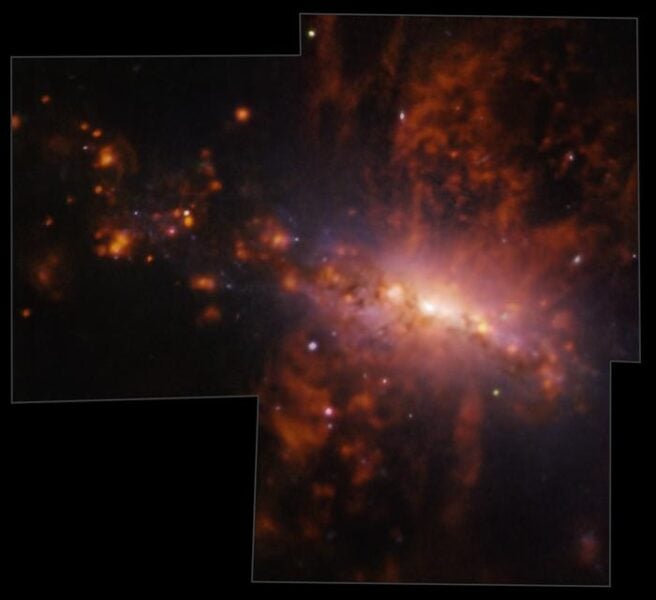An international team of researchers has discovered a gas outflow of enormous proportions in the galaxy NGC 4383, located in the nearby Virgo cluster. The outflow is so large that it would take light 20,000 years to travel from one end to the other, according to a study published in the Monthly Notices of the Royal Astronomical Society.
Dr Adam Watts, lead author from The University of Western Australia node at the International Centre for Radio Astronomy Research (ICRAR), explained that the outflow was caused by powerful stellar explosions in the galaxy’s central regions. These explosions can eject tremendous amounts of hydrogen and heavier elements, with the mass of gas ejected in this case being equivalent to more than 50 million Suns.
Outflows Crucial for Regulating Star Formation and Polluting Intergalactic Space
Gas outflows play a vital role in regulating the speed and duration of star formation in galaxies. The ejected gas pollutes the space between stars within a galaxy and can even float between galaxies in the intergalactic medium. “Very little is known about the physics of outflows and their properties because outflows are very hard to detect,” Dr Watts said.
The high-resolution map of the outflow was produced using data from the MAUVE survey, co-led by ICRAR researchers Professors Barbara Catinella and Luca Cortese. The survey utilized the MUSE Integral Field Spectrograph on the European Southern Observatory’s Very Large Telescope in Chile. “The ejected gas is quite rich in heavy elements giving us a unique view of the complex process of mixing between hydrogen and metals in the outflowing gas,” Dr Watts explained.
Future Observations to Shed Light on Gas Outflows in Local Universe
Professors Catinella and Cortese designed the MAUVE survey to investigate how physical processes like gas outflows help stop star formation in galaxies. “NGC 4383 was our first target, as we suspected something very interesting was happening, but the data exceeded all our expectations,” Professor Catinella said. The researchers hope that future MAUVE observations will reveal the importance of gas outflows in the local Universe with exquisite detail.


